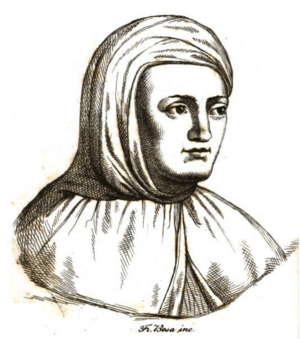Bartholomew of San Concordio facts for kids
Bartholomew of San Concordio was an Italian scholar and a member of the Dominican Order, a group of Catholic priests and brothers. He was born around 1260 near Pisa and passed away in Pisa on June 11, 1347. Bartholomew was known for his knowledge of church law and for his writings. His most famous works include a book called Summa de casibus conscientiae (which means "Summary of Cases of Conscience") and another called Ammaestramenti degli antichi ("Teachings of the Ancients").
Life of Bartholomew
Bartholomew joined the Dominican Order in 1277. He studied at important learning centers in Pisa, Bologna, and Paris. Later, he taught at schools in Lucca, Florence, and Pisa. In 1299, he became a teacher (called a "lector") at a special school in Rome, which was an early version of what is now the Pontifical University of Saint Thomas Aquinas, also known as the Angelicum.
Bartholomew was a very good preacher. He was not only deeply religious but also very smart. He knew a lot about both church law and regular laws. He was also skilled in writing poetry in Latin and in the Tuscan language. People sometimes called him by different names, like "Pisana" or "Magistruccia."
Bartholomew's Important Books
Bartholomew is most famous for his book, the "Summa de Casibus Conscientiae." This book was a guide for people dealing with moral questions or difficult situations. He based his work on an earlier book by another Dominican, John Rumsik. Bartholomew organized John Rumsik's topics in alphabetical order, making it easier to use. He also added new information about church law.
Bartholomew's book was clear and easy to understand. It also included the newest laws and rules of his time. Because it was so helpful, it became very popular in the 1300s and 1400s. It was one of the first books ever printed when printing presses were invented in Germany, France, and Italy. Later, other scholars added to his work, making it even more complete.
Besides his famous "Summa," Bartholomew also wrote other important works. One was "De documentis antiquorum," which was in Latin. He also wrote "Ammaestramenti degli antichi," which was the same book but written in the Tuscan language. This Tuscan version became a very famous book in Italy.
Images for kids



